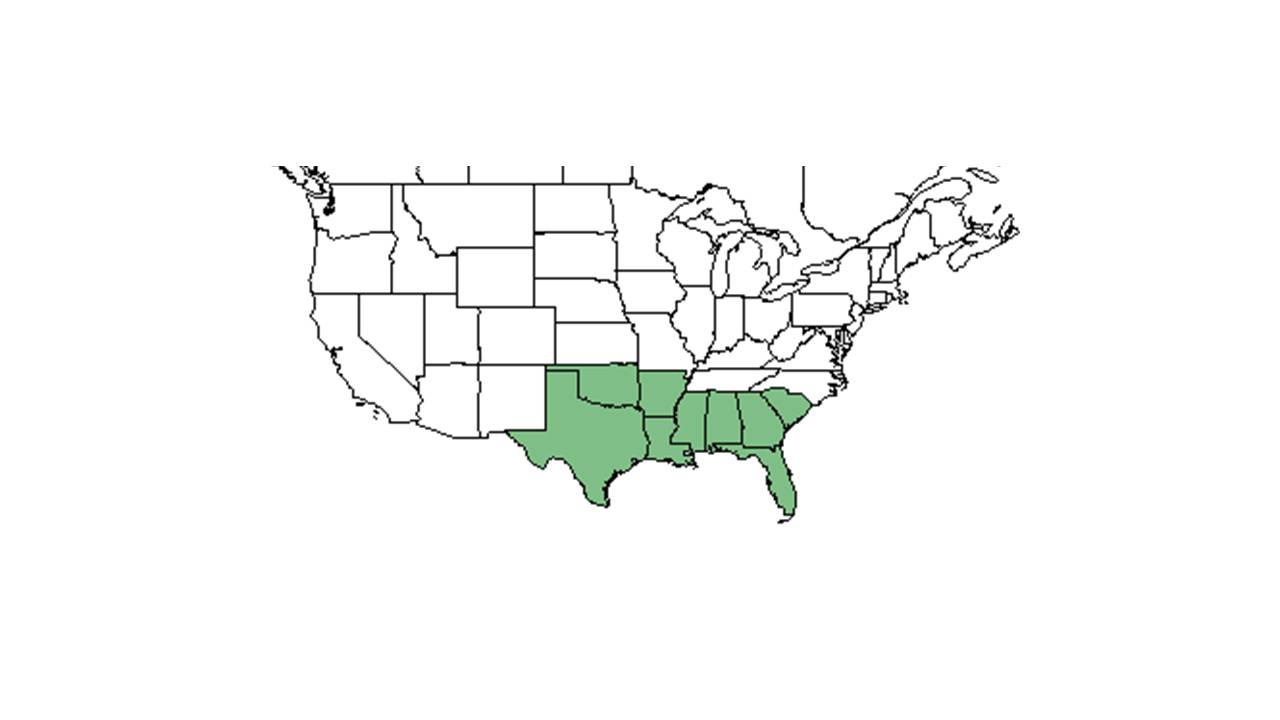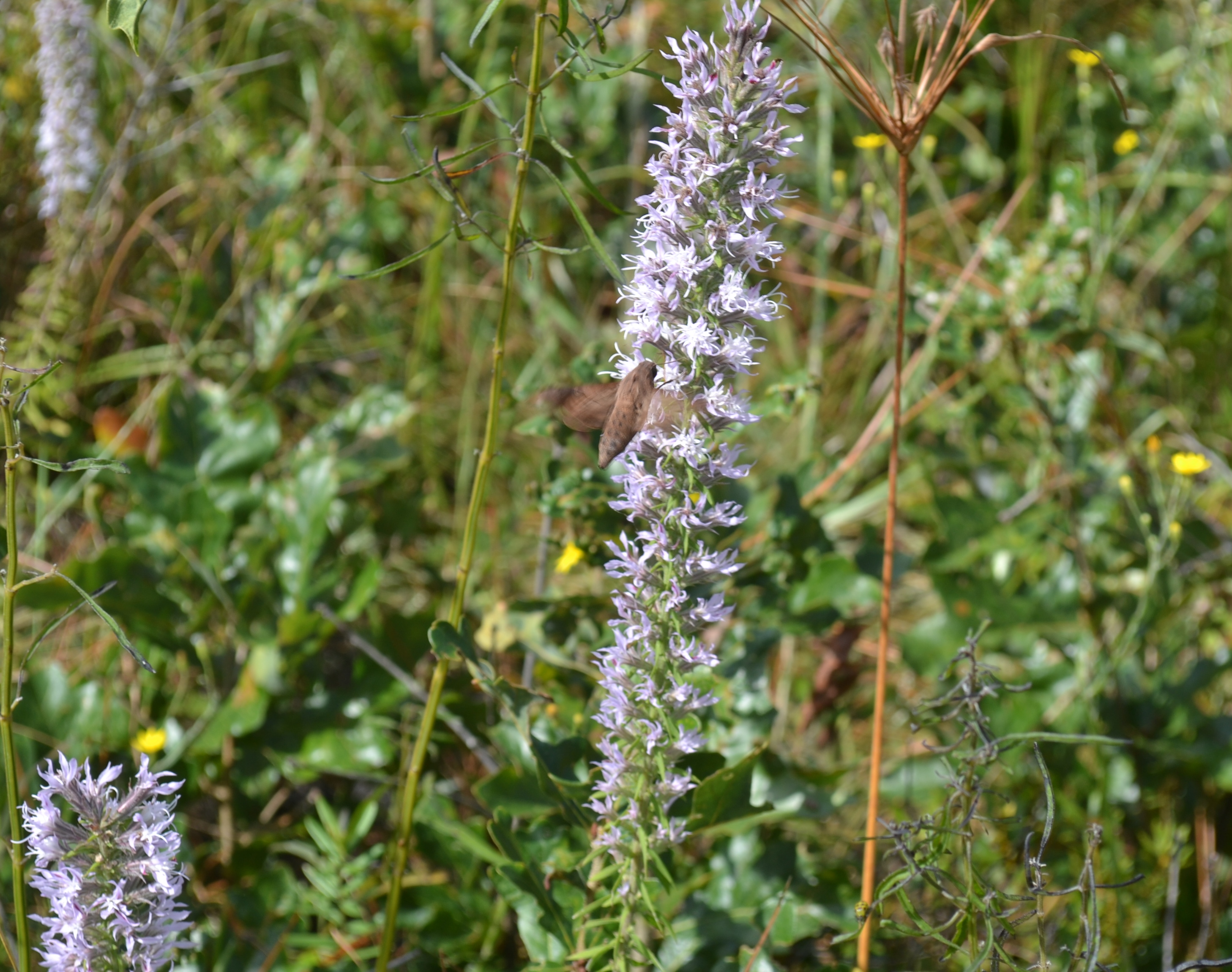Difference between revisions of "Liatris elegans"
(→Ecology) |
(→Ecology) |
||
| Line 30: | Line 30: | ||
==Ecology== | ==Ecology== | ||
===Habitat=== <!--Natural communities, human disturbed habitats, topography, hydrology, soils, light, fire regime requirements for removal of competition, etc.--> | ===Habitat=== <!--Natural communities, human disturbed habitats, topography, hydrology, soils, light, fire regime requirements for removal of competition, etc.--> | ||
| − | |||
This species has been observed growing in longleaf pine-wiregrass communities, in pine-oak woodlands, bordering sink-ravines, and in live oak hammocks in semi-open to open areas (FSU Herbarium). It is also a ruderal species growing in powerline corridors, along roadsides, and in bulldozed sand scrub (FSU Herbarium). Growing in semi-open and open habitats, ''L. elegans'' thrives in dry, coarse, and/or loamy sands as well as red clays (FSU Herbarium). Associated species include longleaf pine, wiregrass, ''Symphyotrichum dumosum, Solidago, Pityopsis, Liatris pauciflora, Quercus laevis, Heterotheca subaxillaris, Haplopappus divaricatus, Polygonella gracile, Aristidia patula,'' and ''Lespedeza hirta'' (FSU Herbarium). | This species has been observed growing in longleaf pine-wiregrass communities, in pine-oak woodlands, bordering sink-ravines, and in live oak hammocks in semi-open to open areas (FSU Herbarium). It is also a ruderal species growing in powerline corridors, along roadsides, and in bulldozed sand scrub (FSU Herbarium). Growing in semi-open and open habitats, ''L. elegans'' thrives in dry, coarse, and/or loamy sands as well as red clays (FSU Herbarium). Associated species include longleaf pine, wiregrass, ''Symphyotrichum dumosum, Solidago, Pityopsis, Liatris pauciflora, Quercus laevis, Heterotheca subaxillaris, Haplopappus divaricatus, Polygonella gracile, Aristidia patula,'' and ''Lespedeza hirta'' (FSU Herbarium). | ||
| Line 36: | Line 35: | ||
This species has been observed flowering and fruiting August through November (FSU Herbarium). | This species has been observed flowering and fruiting August through November (FSU Herbarium). | ||
| − | + | ===Seed dispersal=== | |
| + | According to Kay Kirkman, a plant ecologist, this species disperses by wind. <ref name="KK"> Kay Kirkman, unpublished data, 2015. </ref> | ||
<!--===Seed bank and germination===--> | <!--===Seed bank and germination===--> | ||
<!--===Fire ecology===--> <!--Fire tolerance, fire dependence, adaptive fire responses--> | <!--===Fire ecology===--> <!--Fire tolerance, fire dependence, adaptive fire responses--> | ||
Revision as of 15:05, 14 April 2016
| Liatris elegans | |
|---|---|
Error creating thumbnail: Unable to save thumbnail to destination
| |
| Photo taken by Gil Nelson | |
| Scientific classification | |
| Kingdom: | Plantae |
| Division: | Magnoliophyta - Flowering plants |
| Class: | Magnoliopsida – Dicotyledons |
| Order: | Asterales |
| Family: | Asteraceae ⁄ Compositae |
| Genus: | Liatris |
| Species: | L. elegans |
| Binomial name | |
| Liatris elegans (Walter) Michx. | |

| |
| Natural range of Liatris elegans from USDA NRCS Plants Database. | |
Common name: pinkscale blazing star
Contents
Taxonomic notes
Synonyms: Liatris elegans (Walter) Michaux var. elegans; L. elegans var. flabellata (Small) Gaiser; Laciniaria elegans (Walter) Kuntze; Laciniaria flabellata Small
Description
A description of Liatris elegans is provided in The Flora of North America. A rhizomatous perennial that is frequent where it is found (FSU Herbarium).
Distribution
Ecology
Habitat
This species has been observed growing in longleaf pine-wiregrass communities, in pine-oak woodlands, bordering sink-ravines, and in live oak hammocks in semi-open to open areas (FSU Herbarium). It is also a ruderal species growing in powerline corridors, along roadsides, and in bulldozed sand scrub (FSU Herbarium). Growing in semi-open and open habitats, L. elegans thrives in dry, coarse, and/or loamy sands as well as red clays (FSU Herbarium). Associated species include longleaf pine, wiregrass, Symphyotrichum dumosum, Solidago, Pityopsis, Liatris pauciflora, Quercus laevis, Heterotheca subaxillaris, Haplopappus divaricatus, Polygonella gracile, Aristidia patula, and Lespedeza hirta (FSU Herbarium).
Phenology
This species has been observed flowering and fruiting August through November (FSU Herbarium).
Seed dispersal
According to Kay Kirkman, a plant ecologist, this species disperses by wind. [1]
Conservation and Management
Cultivation and restoration
Photo Gallery
References and notes
Florida State University Robert K. Godfrey Herbarium database. URL: http://herbarium.bio.fsu.edu. Last accessed: June 2014. Collectors: Ed Keppner, Lisa Keppner, Wilson Baker, Loran C. Anderson, Richard S. Mitchell, E.S. Ford, R.K. Godfrey, Bruce Hansen, JoAnn Hansen, R. Kral, John Morrill, J. P. Gillespie, Sidney McDaniel, R. Komarek, R L Lazor, Gary R. Knight, MacClendons, G. Wilder, Bill Boothe, and Marcia Boothe. States and Counties: Florida: Alachua, Bay, Calhoun, Clay, Duval, Escambia, Gadsden, Holmes, Leon, Jackson, Jefferson, Madison, Santa Rosa, Taylor, Washington, Wakulla, and Walton. Georgia: Thomas.
- ↑ Kay Kirkman, unpublished data, 2015.
